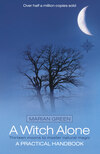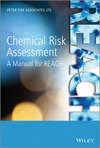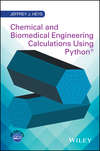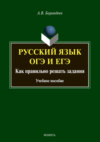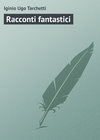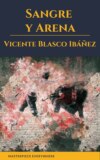Kitabı oku: «A Witch Alone», sayfa 2
Before we used the Roman names of the months, country folk measured time passing by nights and moons. Around the country some fragments of this old lore endure, like calling the full moon of September the Harvest Moon, October the Hunter’s Moon and so on. We still use the expression ‘a fortnight’, meaning fourteen nights, not days! Each lunar period was given over to some specific agricultural activity, weather permitting. There were times for sowing seed, for haymaking, cutting the corn, weeding, gathering fruits of orchard and woodland, for worrying about poor harvests and for rejoicing after rich ones. When there were no convenient shops to supply the bread and little money to buy food, the relationship with the Earth Mother was felt very closely. These days we seldom suffer such hunger, or concern for the coming of spring. The stresses of modern occupations cannot be compared with the fear of starvation, the desperation when the weather prevented the sowing of seed or reaping of harvests, or when the winter woodpile was depleted or the last peats burned, long before the snows had melted from the cottage roofs.
Begin to look around you and see in what ways the moon has affected your life, your home or even your job. Get out after dark and try to see the phase of the moon in the sky. Is the moon visible from your bedroom window, and does her light shine upon your face. What do you know about her phases? Is she the same the whole world over? What about astronauts landing on her surface, she who is a Goddess and bringer of psychic visions?
Do you think you might like to become a pagan, or develop the powers of a ‘witch’? What will your family or workmates think? Will you meet with fear or derision from them? Who should you tell about your new interest? Who do you know who might be able to help you or share your experiments? Are there already any witches in your circle of friends and acquaintances? Would any of them have anything to say, or help to offer? Do you really wish to belong to a coven, to undergo initiation and become part of a fairly secret society? Or are you content in your own company, happy to wander around in natural surroundings, enjoying sunlight and the life of trees and herbs, of birds and wild creatures? Do you crave company, someone to pour out your troubles to, or give you encouragement in any of your wilder schemes? All these questions are important, because if you really do set out to become a ‘witch’ or follower of the Old Ways, some parts of your studies will set you apart.
You will probably lose a few friends, not because they come to fear you but simply because you no longer have the time and energy to devote to some shared activities. Some of your friends might scoff at your pagan ambitions, or make fun of your intentions in front of others, if they get to hear about your interest in witchcraft. Others might try to cause trouble in your job, or stir up bad feeling, through a lack of understanding of modern pagan ideas. You might encounter Fundamentalists of one sort or another, or those out to save your soul from some invented harm, and you will be well advised to consider what responses you might give to such people, if they turn up on your doorstep. Suggesting that you could turn them into a bat might seem to be a good idea at the time but such threats, even made in fun, can be taken too seriously by religious fanatics in whose faith there is little fun, light or laughter.
Among those of the Craft, however, you should find great joy, a real sense of fun and a lightness of spirit which can prove cheering when you feel lonely or despondent, because your meditations are barren, and the moon of your intuition is dark. Even if you are studying alone, you ought to be able to laugh at yourself. Think back to how you would see yourself as a witch, with the regulation pointed hat, the broomstick, cauldron and black cat. Do you imagine it would be amusing, huddled around a cauldron over the smoky fire, conjuring spirits to visible appearance, or brewing potions of bits of frog and noxious herbs in the company of cackling sisters of the art? Again, history has a little by way of explanation about the archetypal picture of the old witch, warts and all. When the first books with woodcut illustrations were printed in the 15th century, an old dame accused of witchcraft, was depicted. She was dressed at the then height of fashion, in a long dark skirt, shawl and lacy cap topped by a tall hat with a round brim, a costume typical of Welsh ladies to this day, if you look at holiday postcards from that principality. Unfortunately, the image persisted, long after the fashions changed. The old lady, with her walking stick, trendy attire and her pet cat, became everyone’s idea of how the witch is supposed to look. Pity that picture is now about six hundred years out of date!
In the Middle Ages, keeping an animal as a pet, whether it was a cat to keep down mice or a dog to hunt the odd rabbit for the pot or even a toad or lizard, was thought to be very strange, and it is on the evidence of such a relationship that some poor old souls were accused, and even sometimes hanged, for their supposed involvement in witchcraft. Today some witches are vegetarians or even vegans, neither eating nor wearing animal products or having them in their homes. Many belong to animal protection or rescue services. Again, the suggestion that witches, then or now, killed animals or used their blood in spells is totally wrong. They would probably have eaten meat, when they could get it, for in the winter especially the country folk had a very poor diet compared to our modern, vitamin-enriched, prepackaged and out-of-season fare. However, the symbolic objects associated with the archetypal witch figure still have a relevance in today’s Craft. Some covens have cauldrons, broomsticks, even cats, because members of the Old Religion have always been practical and kindly people. Objects which have both a practical and a magical use have always been sought by witches. Some of these are natural charms, fossils in the shape of a leaf or an arrow-head collected from the fields or river banks to act as protective amulets. Pebbles with an eye shape turn up all over the world as charms against being ‘overlooked’ by someone with an evil eye. Perhaps a similar charm ought to be discovered to attach to computers to prevent hackers and ward off computer ‘viruses’. Who knows what new arts the New Age witch might need to develop!
The old cauldron was the ordinary cooking pot, yet it could also be used to brew up herbal or magical potions, or the simmering water in the dark iron pot would make an excellent scrying mirror for seeing into the future. The broomstick, whose homely task was to sweep the floor, became a magical wand, and a swept area in the earth or rushes of a simple cottage floor became the magical circle wherein the witch could call up her powers to see at a distance, to seek answers to questions, to raise the energy for healing or blessing a charm. If you take up these old arts you will need to gather a few basic tools around you. This is not the excuse to take your cheque book to the nearest occult emporium and lay out large sums of money for esoteric artefacts, equipment, robes, incenses, knives and what-not. If you really want to master the Crafts of the Wise you will do far better to look in your garden shed, in the kitchen drawer, or in the attic for forgotten treasures which your new-found arts will require.
Your first acts of magic, if you are one of the rare folk who actually do want to align themselves with the traditional arts and reawaken the creative powers of the Old Religion within themselves, will be to get out of doors as much as you can. At first it might seem strange, walking along familiar streets among houses and shops, perhaps, with ancient or modern buildings, or perhaps in the countryside. (On average about 85% of people interested in witchcraft in Britain today live in towns or cities or other urban areas!) The difference is that you will actually be opening your eyes and looking. Look at the buildings, what are they made of? Look at the people, where did they originate? Look at the trees, the plants in gardens or parks, are they common to the land or new fancy species introduced recently? Look at the roads and lanes, are they straight or curving, following a buried stream perhaps, or some other ancient boundary? Where is your nearest flowing water, be it stream, river or even the sea coast? What do you know about the tides and their relationship to the moon? Become curious about everything, for that was certainly one of the assets of every traditional witch. Seek to know about your community, its needs, its desires, its good and bad points, and above all, seek out your local magical spots.
There is no obvious way of locating the most sacred place in your area, and as you are different from me, there is no way of explaining what it might feel like to you. Perhaps you will feel a tingle on the skin, a feeling of heat or cold, or sense the hairs standing up on the back of your neck. Places to go and examine, even in your untrained and unmagical state, should be any kind of spring of water, the oldest church and its churchyard, particularly ancient trees, historic buildings, ruins or, of course, any local standing stones, circles, tumuli, barrow mounds, henges, green ways, hill forts, hill figures, Roman roads or even older causeways. If nothing else is suitable in your home area, go to the top of the highest hill and start by watching the sunset or the sunrise. Take a picnic, take grandma and the kids, go and visit, in a relaxed and watchful mood, any such place with ancient associations. Note down the phase of the moon when you make your journey. Sit quietly and ponder, muse or daydream, asking silently in your heart that you might understand a little of the magic or sacredness of the place. Gentle, new thoughts will drift through your head. Ideas will seem to spring from nowhere. Be silent, still and patient. Feel the earth beneath you, the sky above, and the eternal balance in which they stand. Feel the ages rolling back so that the people of the past, with their forgotten wisdom, may speak to you inside your mind, or drift their shadows across your distracted eyes. Be at peace, seek the calmness and enduring qualities of a big, healthy tree, ask for the voice or energy of a bubbling brook or the surging sea. Request the freedom of spirit to soar with the gulls or skylarks, and see what happens. What ever you do, try to understand the old ways, the simplicity and immediacy of events in your ancestors’ lives. Rediscover the skills they might have had, the crafts they practised, the way they lived in reasonable harmony with the earth taking only what they needed and harming her as little as possible.
These may seem like very small steps to take, but you will be surprised at how much you can discover by peeping over a few walls, examining the shape of your home town, looking out for the sorts of natural things which might well have been sacred to our ancestors. There is a simple logic to the things they considered holy, if you think about it. The sun raised and ripened the crops on which all life depended; the springs of fresh water offered to quench the thirst of man and beast, in summer droughts and winter snows. There is a life force in spring water very different from that in processed tap water, as is obvious from the increasing popularity of bottled spa and mineral waters. Our ancestors named this life force, found in healing springs and herbs, ‘virtue’ and valued its effects.
We are a literate people and fill our memories with telephone numbers, ‘trivial’ facts and figures, which may be useful on quiz programmes but are not a lot of help when it comes to the application of magical arts. So it is necessary to begin to build up new memories, data banks and bits of knowledge to apply to our new-found witchly crafts. Obviously, this is not going to be suddenly regained by sitting at the feet of our arcane grandparents, nor can we conjure back the simpler ages when all knowledge was absorbed, day by day, at our mother’s knee, so we have to turn to books. Of course, there are lots with the word ‘witchcraft’ in the title, but not all contain useful material for the solo student, or one who wants to walk unhampered in the old ways. Do look out for the books of Doreen Valiente, for she was one of the people most closely involved in the rebirth of ‘coven witchcraft’, being one of Gerald Gardner’s High Priestesses, and it is her poetry which gave voice to much of the pagan ritual used in groups all over the world. She learned much of her own lore from the Sussex folk and wove threads of that traditional wisdom into some of the more public of her writings. Gerald Gardner, in his novel High Magic’s Aid, and other books The Meaning of Witchcraft and Witchcraft Today, first brought together enough ideas to set in train the forms of witchcraft which are used by many covens worldwide today. The various works of Stewart and Janet Farrar trace the varieties of coven craft spreading from the ideas of Alex Sanders, who mixed some of the arts of High Magic ritual into the fragments of craft knowledge he had accrued over many years. Read all such books with these questions ever in your mind, ‘Can I imagine the simple, ordinary country folk doing this, using this instrument, or even being rich enough to possess a sword, for example? Would they gather in this way, have a structure of priests and priestesses, a regular calendar of feasts fixed by the days of the month, and not by Nature and her cyclic harvests?’
Whatever you read, try not to restrict yourself to just those books marked ‘Witchcraft’. Look at country life, seasonal festivals, ancient religions, local customs and sacred places. As you read, jot down in your Book of Illuminations those facts, poems, ideas and odd bits of lore and folk magic that interest you so that you can come back to them, try them out and really understand them as your knowledge grows.
Exercises
Read the chapter a couple of times and note the things which most seem to click with you. If you are going to follow the thirteen lessons month by month you will have to choose a day on which to start, preferably that after a new moon. Buy a large A4 notebook and a hardback spring-clip file to keep your pages in. You can decorate the cover, for this will become your personal Book of Illumination, so find a secret place to keep it in so that honest accounts of dreams, ideas, wishes and discoveries can be entered without fear of their being read by others. Later on, you will need to enter details of spells you have worked, indications about divinations and their outcome, and information on all sorts of things.
Go to the children’s section of your library or bookshop and see what they have on Comparative Religion. You need basic information to understand what people believe, ordinary Catholic or Anglican Christians, Quakers, Methodists and some of the other world faiths, like Buddhism, Hinduism, Judaism, Shinto, Islam and any others which interest you. You will also come across Greek, Roman and Egyptian religions from the ancient world, and they have close bearings on some aspects of modern paganism.
Become really nosy and curious about where you live, why it is there, what was there before. Find out what is sacred or special in the area, the origin of the place name. If you have contact with any old people, your grandparents or other elderly folk, ask them about how the place used to be, any local celebrations or curious customs. Look hard at things, as suggested in this chapter, especially out of doors. Watch the moon growing and changing her position in the sky, night by night, when the sky is clear. Go and feel the atmosphere at the nearest sacred place. How does it feel different?
Read up on the farming year, the old agricultural practices and the seasonal work. Find out if there is a local museum with old tools and kitchen equipment, or layouts of traditional cottages. Try to get the feel of a cruder, simpler past, and the people of long ago.
Ask yourself questions about what you know about witchcraft, what you believe it to be like, what it can do for you, and what you can offer to the Craft in return. Compare what you have read in books about pagan ideas with what you are finding out about the lives of people in earlier times. Write down notes on all you discover on the first pages of your Book of Illumination.
Here are a few books to get you going:
Vivienne Crowley, The Principles of Wicca (Thorsons)
Marian Green, Practical Magic (Lorenz)
Marian Green, The Gentle Arts of Natural Magic (Thoth)
Prudence Jones and Caitlin Matthews, Voices from the Circle (Aquarian)
Starhawk, The Spiral Dance (Harper and Row, USA)
Doreen Valiente, Witchcraft for Tomorrow (Robert Hale)
TWO Meeting the Goddess and God of the Witches
I am that soundless, boundless, bitter sea.
All tides are mine, and answer unto me.
Tides of the airs, tides of the inner earth,
The secret, silent tides of death and birth.
Tides of men’s souls, and dreams, and destiny –
Isis Veiled, and Ea, Binah, Ge…
DION FORTUNE: The Sea Priestess
The pagan religion of witchcraft is one in which each seeker sets out on a personal inner quest to meet and communicate directly with various aspects of the goddess or god of their chosen tradition. It is not a faith, so ‘belief’ in invisible deities, and orthodox dogma should have no part in the matter.
In this chapter I will try to set out some of the widely held ideas about the Goddess and about her consort, the Sun God, so that you can make your own choices as to whether they have any validity for you, if their attributes appeal to you, or if you feel drawn towards their myths or their symbols. No one, inside the Craft, would ever insist that someone has to accept these Great Ones in a particular form, or that they have to be worshipped in only one way. The seasonal festivals celebrated by coven witches often act out the life cycles of the Goddess in her various guises, and her Son/Lover. In some cases the High Priestess and the High Priest raise their own consciousness to become united with these deities, and so perceive them and show them to the rest of the coven in a very intimate way. Those who follow the Old Ways alone will come to know each aspect as a real being, as a friend and guide.
What is said about the nature of the Old Ones by someone other than yourself can only ever be their own personal description, just as another person may try to describe a piece of music or the flavour of a rare delicacy to someone who has sampled neither. Words are inadequate, and can at best only be vague impressions of what can often be a very deep and emotional experience. Because there is no ‘bible’ of witchcraft, there is no single source of inherited myths and religious stories, shared by all neo-pagans. It is felt that the gods are continuing to live out their own lives, and so with each cycle of the Earth among the stars, there will be a slightly different version of their story. The pagan gods and goddesses are not fixed and completed beings, whose will is immutable and whose actions are distant. All of them are immanent, close to us, accessible. If we make the effort of prayer, invocation or magic, we will be able to perceive them, in a way we can actually comprehend, seeing them as great beings of power. All that can really be taught is the simple ways in which this meeting, on another level of our being, can be brought about, so that seekers can see for themselves how that religious relationship will best fit into their own concepts and philosophy.
Firstly, though, we do need to understand something about the eternal, ever-changing, many-faceted and varied guises in which the Great Mother and the Sky God are perceived among those who try to walk in their ways. The Goddess is an undying, threefold being, who can be understood as our original starborn Mother. She is commonly associated with the planet Earth, as Mother Nature, the Earth Goddess, Gaia, the First Parent, self-fertile, bearer of all living creatures, human, animal, and often all plants and other sentient life forms. We know that all living things are born of the Earth, made of its substance, taken in with food and water. We know, too, that the Earth is a small scrap of star stuff, captured by the nearest star, our Sun, so our own original heritage is from the stars, at the birth of creation.
The Goddess in many of her pagan pantheons is also the Moon Goddess, triple-faced and triple-phased. The young Moon Maiden, child sweetheart, beloved mistress, growing daughter of the night, is her waxing form. Full-bellied Moon Mother, full-blown rose of light, travellers’ joy, guide and companion on the magical paths, she leads our monthly revels. In her waning phase, she is the dark-visaged hag deep-steeped in wisdom, crotchety and sharp, but she is the giver of knowledge to those who will face her in the darkness, and as a dutiful grandchild ask for help. The Moon Goddess also has a hidden face, at the dark of the moon, when the night sky is empty and the light of the stars alone illumines the wild places. This aspect of her you will need to discover for yourself, man or woman, for this is part of the Mystery of moon magic, and is not spoken of in words.
The Goddess is also Ocean, the great sea from which arose the evolving forms of life, third mother to us human beings. The first mother is Earth, the second the moon awakening mind, and the third mother, all the sacred waters, from spring and pool, to lake and river, to mighty sea and moon-led power of the tides. Those who become her children will find her in all her aspects, alive in wild places, and in those magic rings, circles out of time, between the worlds, created by ritual and controlled desire.
The Goddess is nameless, yet she has many names in many lands and pantheons. If you examine their mystery you will find not names but titles, attributes, ‘job descriptions’, even, spelled out in many tongues. The Goddess is the Ruler of Change, of Times and Tides, and as such she is the Mistress of Magic, for that is ‘the art of causing, controlling and shaping change, in this world and the inner worlds’. She is the Giver of Oracles, for nearly all the ancient sacred centres had their sybil, or oracular priestess, working under the thrall of the Goddess to offer wisdom to those who came to ask. She is the Birth-Bringer, the Death-Taker and the Rebirth-Giver also. She is the Initiator of the magician, the Inspirer of poets, who have drunk from her magic cauldron or heard her singing in the light of dawn. She is the Enchantress, the Spell-Weaver, the Charmer and Binder, the Measurer of Life’s Thread and She Who Cuts the Thread. She is Our Lady in Darkness, ruler of the Underworld, the Otherworld, Queen of the Dead and the Unborn. She is the Healer and Restorer, and she redeems our forgotten, childlike selves, if we call upon her.
If you look at the names applied to her in the ritual invocation at the head of this chapter (taken from one of Dion Fortune’s novels, The Sea Priestess), you will see several names attributed to the Great Goddess. Isis, she who rules the pantheon of gods and goddesses of ancient Egypt, as Isis Veiled, the Queen of Nature. The name Isis, Aset in Egyptian, means ‘Throne’, so she represents the ‘seat of power’, the base, the structure of that which is worshipped. Ea is the Mother of Time, Soul of Space, Oldest of the Old. Binah, the dark Mother of All, the great sea, the female principle, yin. Ge is the sphere of the Earth, root of such words as ‘geology’ – the science of rocks; ‘geography’ – mapping the Earth; ‘geomancy’ – a magical form of divination whose symbols are drawn in the earth. None of these sacred titles is a name.
Similarly, if you start to look for images you will find many, in every culture, apart from Islam in which all depictions are forbidden. You will discover paintings, carvings, embroideries, rock pictures, statues, pottery figures, even huge earthworks, like that at Silbury Hill in the South of England, depicting or symbolising the Great Goddess in her many guises, or displaying her various traditional symbols. From the great image of the moon in the sky, which is also her symbol (for she is not the physical mass of the moon), to the tides which it creates within the mighty oceans and smallest rivers, to the rising waters of springs: the seasons of the Earth, and the substance of the Earth beneath our feet, on which we have our homes and being, all these are parts of her. All are sacred, and held as holy in her name. All have power which we may draw upon, once we gain the key which unlocks her secret wisdom.
The Goddess has to be invoked, that is, called up in the imagination by using poetic description and symbols associated with the aspect which you seek to contact. If you are new to this idea, keep it simple. Use a prayer or description from a classical source, when you are in a quiet place. It is usually best out of doors, and simply standing beside a river, in a garden or any natural setting, where you feel at peace and free. Read the words, or imagine the image, then close your eyes and relax and see what happens. Here is a description taken from Apuleius’ story The Golden Ass in which the hero, Lucius, invokes the Goddess and…
I had scarcely closed my eyes before the apparition of a woman began to rise from the middle of the sea with so lovely a face that the gods themselves would have fallen down in adoration of it. First the head, then the whole shining body gradually emerged and stood before me, (poised on the surface of the waves…Her long thick hair fell in tapering ringlets on her lovely neck, and was crowned with an intricate chaplet, woven of every kind of flower. Just above her brow shone a round disc, like a mirror, or the bright face of the moon, which told me who she was. Her many-coloured robe was of finest linen…and along the hem was a bordure of flowers and fruit…The deep black lustre of her mantle, slung across her body from the right hip to the left shoulder and caught into a great knot, was embroidered with glittering stars…and in the middle beamed a full and fiery moon…All the perfumes of Arabia floated into my nostrils as the Goddess deigned to address me: ‘You see me here, Lucius, in answer to your prayer. I am Nature, the Universal Mother, mistress of all the elements, primordial child of time, sovereign of all things spiritual, queen of the dead, queen also of the immortals, the single manifestation of all gods and goddesses that are. My gesture governs the shining heights of Heaven, the wholesome sea breezes, the lamentable silences of the land below. Though I am worshipped in many aspects, known by countless names, and propitiated with all manner of different rites, yet the whole round Earth venerates me.’
This fragment of a magical book, of adventure, folly, sacrifice and communion with the Goddess, in which Lucius is transformed into a donkey until the Goddess frees him and makes him her priest, contains the very essence of pagan worship and the invocation of Isis very powerfully demonstrates the kind of image words can conjure up. Similar esoteric verses, prayers and invocations will be found in the works of many poets, ancient writers, priests of the old religions which predate Christianity, including the Bible. The Song of Solomon contains beautiful love poems dedicated to Sophia, the Goddess of Wisdom, describing her face in terms of flowers, her breasts as white deer, feeding among lilies. Do not overlook this book because it seems to reject the power of the wise one. In fact both the Old and New Testaments contain much magical and pagan information, if you are willing to search it out.
The God of the Witches is also many-faceted, being symbolised by the sun in the sky, and, because of the changes that the turning seasons bring, he is an evolving deity too. He is also depicted surprising frequently as having horns or, in Britain and France, the antlers of a great stag. Like the Goddess, he has many titles, which often refer to his being a Horned God; Herne, or Cernunnos, or Pan, that archetypal half-man, half-beast, ruler of wild creatures in the ancient forests.
Like the Goddess, he has three aspects. His hairy legs and hoofs link him with the animal kingdom, as their guardian and shepherd; his human body from the waist up, containing his human heart, shows that he can feel for the humankind in his care, and is their Lord of Life. His noble brow, dark, thoughtful eyes sparkling with humour, and above those the lordly antlers, show he is Divine, in his own right. These antlers are the symbols of the sun’s rays, of the power of Light, of co-creation, and like the points on the earthly king’s golden crown, they signify royalty. The God of the pagans walks in three worlds: the lowly land of all beasts, wild and tame, with their simplicity; the man-made realms and agricultural/industrial complexes, for he has always been the Magical Smith, the Maker and Designer: and above these he is the Divine Sky Father.
In the story of the Goddess and the God which may form the underlying pattern of the pagan cycles of celebrations, the God is born of the Lady in midwinter and, like all nameless gods, is known as ‘Mabon, son of Modron,’ literally ‘Son, son of the Mother,’ in Welsh. It is a familiar idea, found in many faiths world wide, of a magical son born in humble circumstances to a mother who does not appear to have a husband. How can she? For the God is also his own father, loving his mother, becoming her husband, and yet she outlives him. The God is a cyclic being, closely related to the greenery of the land, being born in winter dark, growing through the days of spring, coming to his full strength, with the sun above, at midsummer, and learning of his impending sacrifice at harvest. Here he is cut down, willing victim to the reaper’s blade, offering his seed as grain to sustain the people as autumn chills the land. Dead, he is mourned by the Goddess, his widow, who never dies or deserts her children. In the dark months of winter she renews her youth, casting off the face of the hag, and regains her beauty, ready to encounter the young lord in spring.
